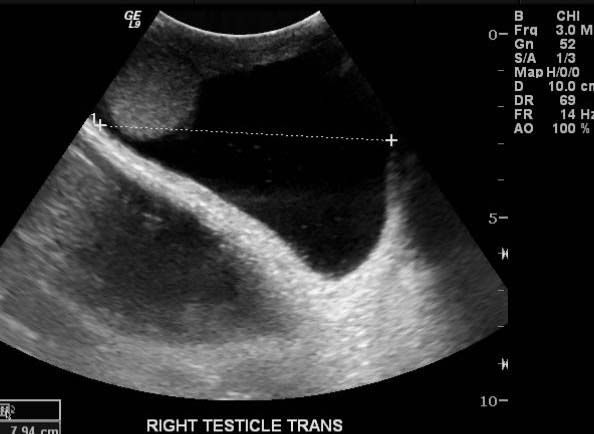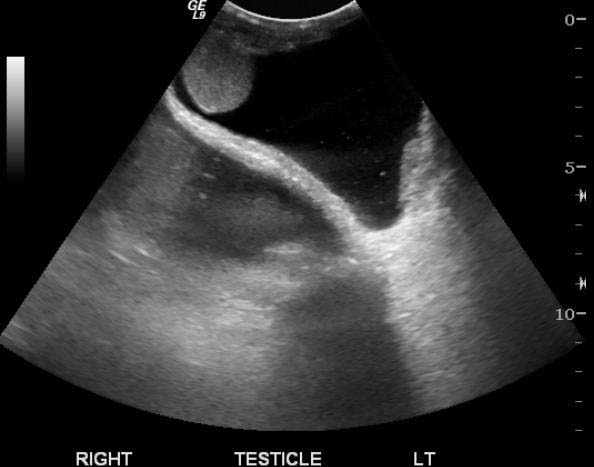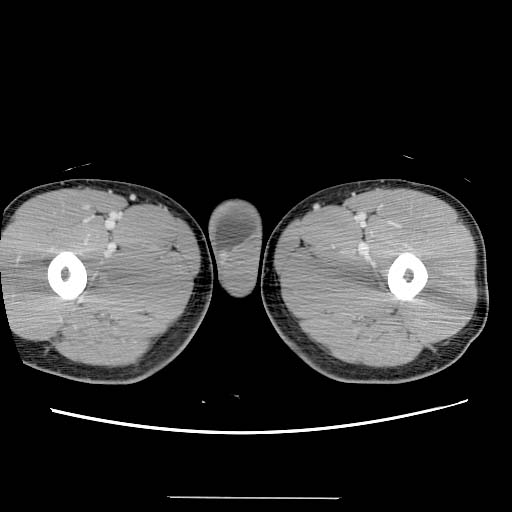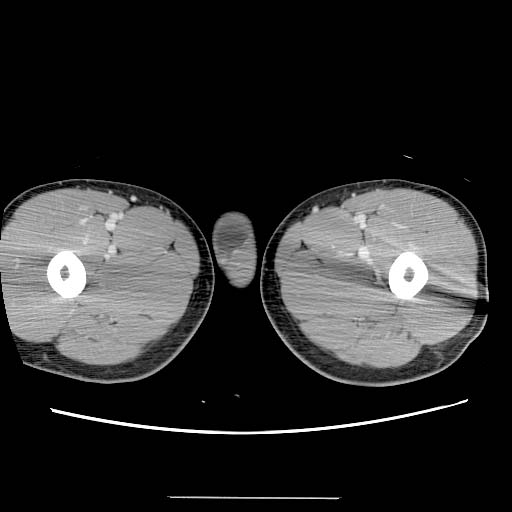Hydrocele testis
| Hydrocele testis | |
 | |
|---|---|
| Hydrocele | |
| ICD-10 | N43.0-N43.3 |
| ICD-9 | 603 |
| DiseasesDB | 6137 |
| MeSH | D006848 |
Template:Search infobox Steven C. Campbell, M.D., Ph.D.
Overview
A hydrocele testis is an accumulation of clear fluid in the tunica vaginalis, the most internal of membranes containing a testicle. A primary hydrocele causes a painless enlargement in the scrotum on the affected side and is thought to be due to the defective absorption of fluid secreted between the two layers of the tunica vaginalis (investing membrane). A secondary hydrocele is secondary to either inflammation or a neoplasm in the testis.
A hydrocele usually occurs on one side. The accumulation can be a marker of physical trauma, infection or tumor, but the cause is generally unknown.
Symptoms
A hydrocele feels like a small fluid filled balloon inside the scrotum. It is smooth, and is mainly in front of one of the testes. Hydroceles vary greatly in size. Hydroceles are normally painless and harmless. Large hydroceles cause discomfort because of their size. As the fluid of a hydrocele is transparent, light shown through a hydrocelic region will be visible from the other side.
Symptoms of a hydrocele can easily be distinguished from testicular cancer, as a hydrocele is soft and fluidy, where a testicular cancer feels hard and rough.
Through diagnostic ultrasound the accumulation of fluids can be diagnosed correctly.
Ultrasound
-
Hydrocele
-
Hydrocele
CT Findings
-
Hydrocele
-
Hydrocele
Treatment
The accumulation should generally be removed surgically. The procedure is called hydrocelectomy, the tunica vaginalis is excised, the fluid drained, and the edges of the tunica are sutured to prevent the reaccumulation of fluid.
If the hydrocele is not surgically removed, it may continue to grow. The hydrocele fluid can be aspirated, the procedure is less invasive but recurrence rates are high.[1] Sclerotherapy, the injection of a solution following aspiration of the hydrocele fluid may increase success rates.[2] In many patients, the procedure of aspiration and sclerotherapy is repeated as the hydrocele recurrs.[3]
Fertility
A hydrocele testis is not generally thought to affect fertility. However, it may be indicative of other factors that may affect fertility.
Footnotes
- ↑ Fracchia JA, Armenakas NA, Kohan AD(1998). Cost-effective hydrocele ablation. J Urol 159: 864-7. PMID 9474170.
- ↑ Beiko DT, Kim D, Morales A(2003). Aspiration and sclerotherapy versus hydrocelectomy for treatment of hydroceles. Urology 61: 708-12. PMID 12670550.
- ↑ Shan CJ, Lucon AM, Arap S.(2003). A Comparative study of sclerotherapy with phenol and surgical treatment for hydrocele. J Urol 169: 1056-9. PMID 12576845.
Template:Diseases of the pelvis, genitals and breasts
de:Hydrozele no:Vannbrokk Template:WH Template:WikiDoc Sources


